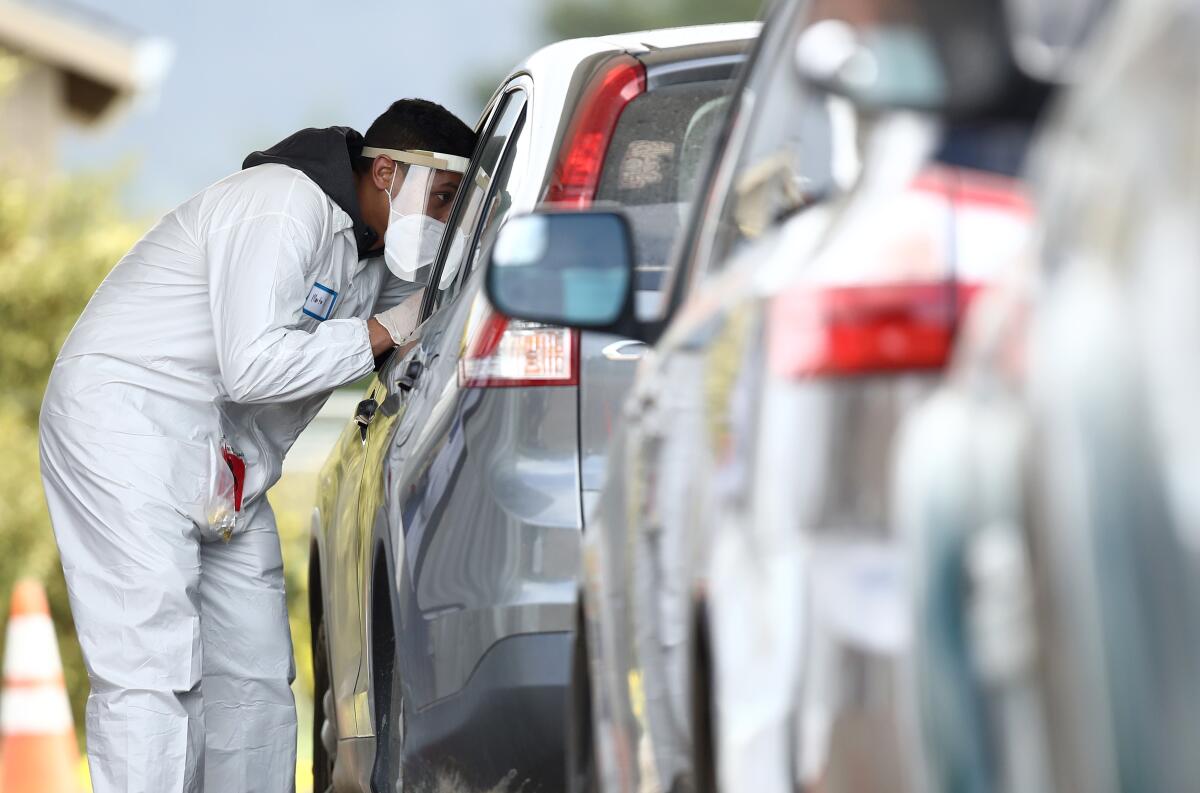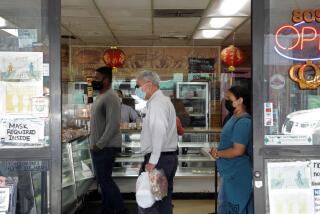This California town has the coronavirus testing program we all need. We should be thankful they do

- Share via
It’s galling that celebrities, professional athletes and politicians without symptoms were able to use their connections and wealth to score COVID-19 tests early in the pandemic, when physicians and hospitals didn’t have enough to go around for the sick patients who probably did have the disease.
For that reason, some people might feel irritated with one Northern California community that launched a large-scale, self-funded effort Monday to test all of its residents, sick or not.
But don’t hate Bolinas, the unincorporated west Marin County seaside community in question. This is a case not of rich people bogarting a scarce supply of tests, but of a historically civic-minded community (whose residents are not all wealthy, by the way) leveraging its resources to do us all a favor.
And we all should be thanking this little town’s residents profusely for conceiving, funding, launching, volunteering and offering up their bodies for the nation’s first community-wide COVID-19 viral and antibody testing study — something governments in the United States have yet to figure out how to do.
Oh, and for putting it together in just a few weeks.
Although there have been a smattering of large-scale testing studies in the U.S., they all focused on either chemical analyses that detect active COVID-19 infections or antibody tests that determine if someone had previously contracted and overcome the virus. Not both. But experts say that the key to lifting stay-at-home orders is having reliable data from testing of both types done on a high percentage of the local population. This will help epidemiologists better understand infection and exposure rates as well as how the virus moves through a community.
The study was conceived by two Bolinas residents, a venture capitalist and a pharmaceutical executive, who were inspired by the northern Italy town of Vò, which was able to test all of its 3,000 residents and effectively stop the virus’s spread. They reached out to other community members for support and to the University of California, San Francisco infectious disease researchers to see if they would help them do the testing program, which is free for all of Bolinas’ 1,600 residents and funded by donations.
UCSF researchers said yes, seeing the epidemiological value of such a broad study. Separately, UCSF has developed a companion testing study for San Francisco’s Mission District that’s slated to begin Saturday and will provide another community-wide snapshot of COVID-19 for comparison.
The two communities are different in important ways. Surrounded by water and rugged coastline, Bolinas is rural and geographically isolated — there’s only one main road in — yet it’s a tourist destination that continued to admit visitors during the lockdown. The Mission District is a dense urban neighborhood with no physical borders.
The samples gathered from both studies will be tested by UCSF labs and the results analyzed by UCSF researchers. Positive cases will get further support and contact tracing. As soon as next week, aggregate data about active infections will be shared publicly so that health officials in other places can use the information to better understand how infections spread. The data from the antibody testing will take about four weeks to be ready for public consumption.
Not only will this effort give us important data about COVID-19 upon which other communities can build to develop public health strategies, it’s a blueprint they can follow to do their own studies. And they should.
Ideally, the financial burden of testing should be borne by the government, not by communities members. Not every city or neighborhood has the wherewithal of Bolinas. But as public health experts make clear, until we have a vaccine for COVID-19, which will not be for at least a year, and effective medicine to treat sick people, our best hope for getting the nation back to work is testing, testing and more testing. Bolinas is giving us our first glimpse at what such a systematic approach looks like.
More to Read
A cure for the common opinion
Get thought-provoking perspectives with our weekly newsletter.
You may occasionally receive promotional content from the Los Angeles Times.









